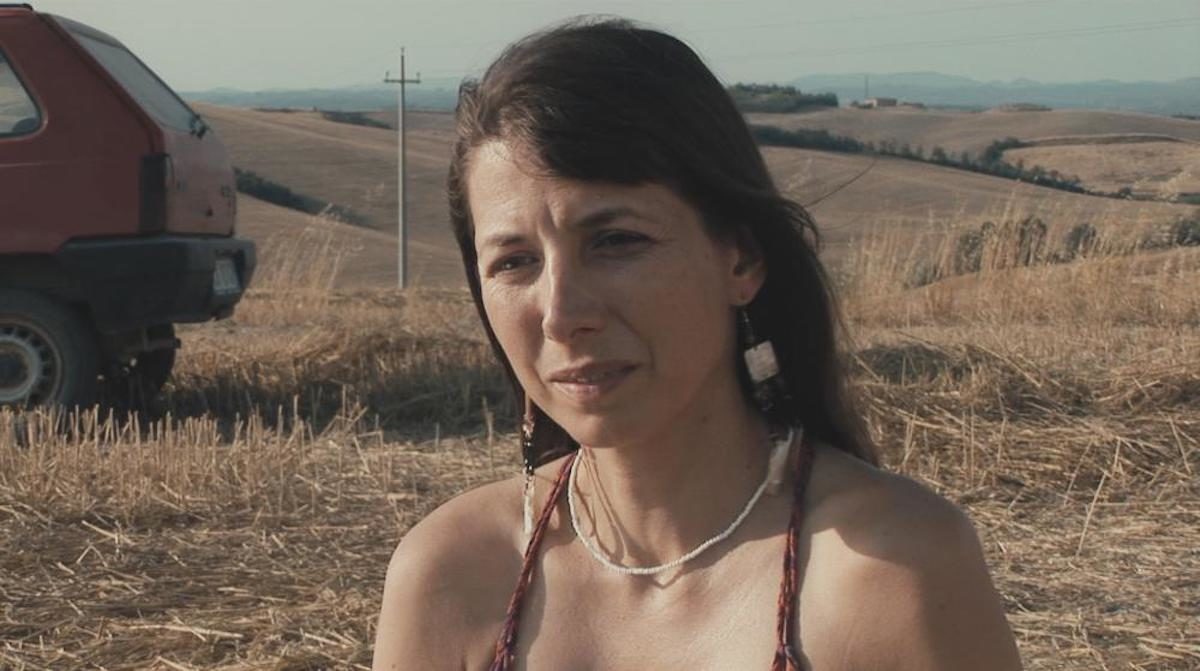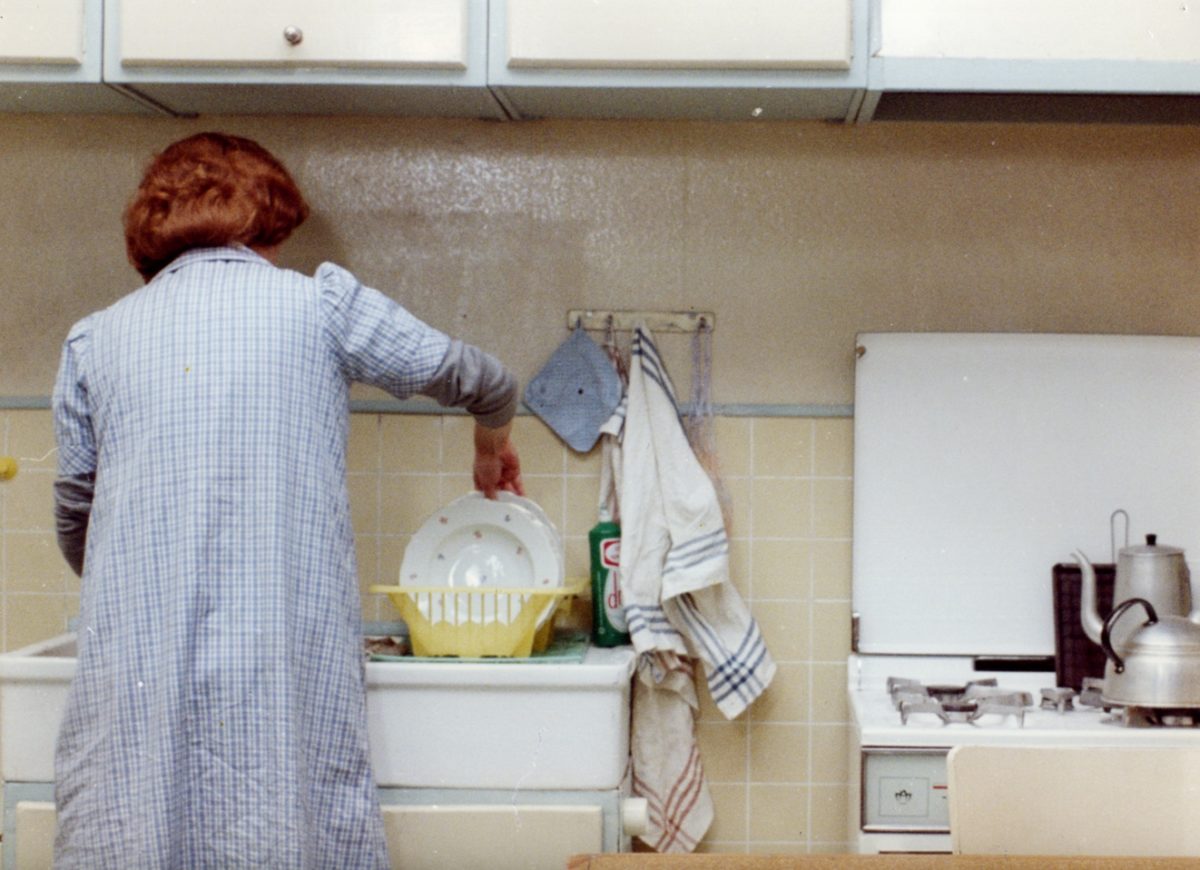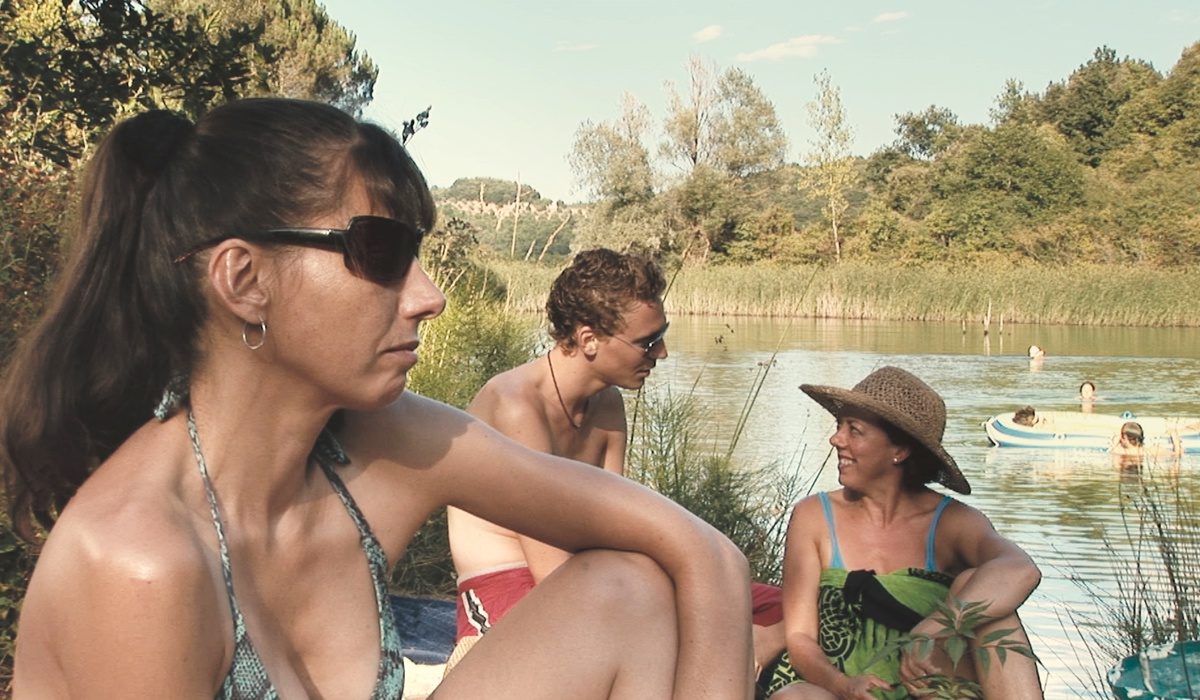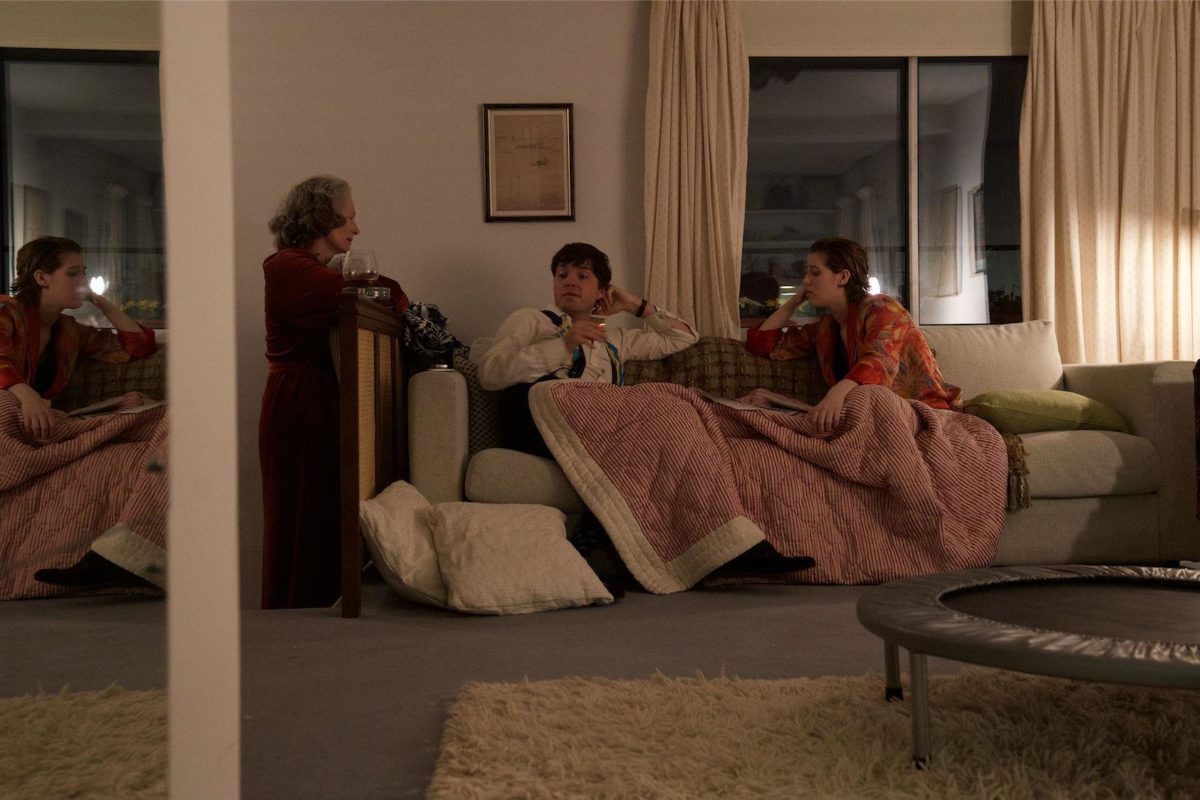Durational manipulation is perhaps one of the most multifaceted artistic practices, across all different mediums. Though not always the most tangible entry point of a piece, time (and how it’s used) can be handily wielded as a conveying tool, highlighting emotional, political and even experimental beats subtly. This isn’t to say that the use of time in film is critically undervalued—durational exercises tend to fall under the “slow” or “drone” cinema banner—but is rather misconstrued. Mentions of duration seem to imply either heaviness in the vein of, say, Bela Tarr, or an exercise in nearly real-time, like Richard Linklater’s Before Sunset (2004).
However, time isn’t solely a grandiose entity. The most seemingly mundane shifts to a narrative’s timeline greatly impact the audience’s relationship with what exactly they are engaging in. In literature and film, paragraph breaks and scene cuts denote some shift in time, some sort of alteration to the sequence of events at hand. The relationships the characters have with the passage of time are not necessarily the prime focus, though they provide a thematic backbone that’s worth tracing regardless of both narrative intent and style. These elisions, no matter how subtle or pronounced, succeed in a sensorial effect on the audience, in which durational shifts are felt rather than announced, and therefore, are made all the more rich.
Most recently, Joanna Hogg and Rachel Cusk—director and author, respectively—have each honed an approach to duration in their work, in which their narrative timelines are presented as collapsible, eschewing what’s typically expected of sequencing in film and literature. There are many establishing elements that can be adopted to begin to parse the dense works of these two artists, but their malleable approach to time resounds the most as a shared throughline. Though the two also employ characters as ciphers, unfamiliar locales, and familial squabbling, these facets of the works possess a more impactful quality for the ways in which they are divorced from conventional linearity while still moving from point A to B in chronological time. It’s not that the events are scrambled anachronistically, just the distances between them are more elusive.
Though Cusk has been writing since the early 90s, it’s her Outline Trilogy, kicked off in 2014 with the novel of the same name, that mostly mirrors Hogg’s four films. Cusk’s Outline, and Hogg’s Unrelated (2008) hinge their existentialism on women navigating a relatively unfamiliar landscape, both physical and emotional. For Cusk, it’s the trilogy’s narrator, Faye, returning to the Greece she’s vacationed before with her family, now alone (for the purpose of teaching a summer writing class) and divorced. For Hogg, it’s Anna (Kathryn Worth, a middle aged woman coming to Tuscany to spend some time with an old, nearly estranged friend’s family, following a possible breakup with her boyfriend (whom we never see).

Unrelated has weathered comparisons to Éric Rohmer’s document of summertime ennui, Le rayon vert (1986)—which Hogg has even brought into the discussion—but the similarities it shares with Outline are impossible to ignore. They both feature recognizable moments of catharsis and epiphany that disrupt their disarming wandering, yet in their collapsible timelines, these events are buoyed by more auxiliary events that are almost incidental. Because durational cohesion is secondary, these admissions—Anna’s beginning menopause and Faye’s realization of a man’s dangerous sexism—are delivered straightforwardly, yet still sideswipe in their emotionality. Anna’s is a tearful confession, but it is not an endpoint, and we’re soon placed back within the lackadaisical sprawl of the summer home, occurring like a blip rather than a pre-established climax; same for Faye, who is still given over fifty pages of conversational material, and even ends with a subtle joke concerning a character confusing solitude with solicitude, of all things.
Both artists, in their forgoing of durational signifiers, have further broken down the formal presentation of plot-points and the like, hinging the emotional and political on relationships more than anything else; instead of watching a series of events play out through time, we watch the development of relationships—with others, with apartments, with songs, with drugs—do just that. Hogg and Cusk mold their timelines in accordance with their character’s central relationships, and thusly, have continued pushing towards an approach that is equally more generous as it is dense. Cusk has done away with chapters and single conversation pieces (which dictated Outline’s compartmentalized structuring) by Kudos (2018), and Hogg has expanded upon the stark diegetic and wholly subjective aesthetics of her earlier films, culminating in 2019’s excellent The Souvenir.
Such an approach is perfectly summarized in an interview with Cusk by The New Yorker in 2018, in which she refers to the personal experiences and expressions of characters as, “…oceanic and as things you can enter and leave in certain phases of your life that aren’t completely determined by the fact that you’re Jane and this is your life.” The ethos of Hogg and Cusk is one of temporal snapshots, ones that aren’t concerned with subscribing to expectations of real-time and length. These phases that Cusk speaks of can concern the expected responsibilities of being a well-respected author (Kudos) or an on-and-off, destructive relationship with a heroin addict (The Souvenir). These phases, comprised of events whose mundaneness is disarmingly affecting, are what produce the malleability of time. A novel by Cusk or a film by Hogg is like an expertly assembled set of dominoes; when one storytelling trope topples, the rest follow suite, and immersively so.
As narrative isn’t unfolding at a clip to appease audiences, we are placed in similarly subjective situations as the characters: the seemingly doomed renovation of Faye’s London flat in Cusk’s Transit (2016), in which she has to send her sons to live elsewhere to be able to complete, and the art-deco masterpiece residence in Hogg’s Exhibition (2014), whose being put on the market cracks down on the couple who inhabit it. Space and its subsequent emotional significance shape the passage of time in these works, and allow for a loosening of the screws, but without ever letting the wheels fall off.

The phases that Cusk references are inherently extremely personal, as they seem to materialize out of memories across a spectrum of repression. However, this approach to the personal is rooted in the cinematic tradition of Belgian director Chantal Akerman, whose films are unfortunately dogged by claims of clinicality and the academic, when instead they are overwhelmingly emotional—and sometimes even slightly humorous—dispatches from the very phases that Cusk speaks of. It’s hard not to speak of Hogg’s own proclivity for the ways in which we find ourselves displaced in domestic interiors, a feeling of unwelcomeness that pervades even a family’s vacation home (2011’s Archipelago), without referencing Akerman’s Jeanne Dielman, 23, quai du Commerce, 1080 Bruxelles (1975). And likewise for Cusk’s Faye, whose alienating experiences among literary types parallel that of the Anna of Akerman’s Les Rendez-vous d’Anna (1978), a director who’s also on a promotional tour.
Akerman, too, found stirring ways in which to imply the passage of time while forgoing obvious character signifiers and temporal signposts. She is arguably the protagonist of her essayistic News From Home (1977), as it is her voice that reads her mother’s letters on the soundtrack laid over unhurried shots of New York City—where Akerman was living at the time—at varying times of night and day. Though the duration of the images is felt, as they linger with no discernible point of beginning or ending, it’s the letters that truly imply how much time has passed, as Akerman’s mother implores her to write back. Hogg, who even presented a touring retrospective of Akerman films under her A Nos Amours banner, has expanded upon this use of everyday tokens in The Souvenir, in which subtle—though unannounced—changes are made to the furniture of Julie’s (Honor Swinton Byrne) apartment, sometimes at a disorienting pace. Akerman would continue exploring her devastatingly complex relationship with her mother throughout her career, just as Hogg has taken on a similar note of autobiography, as The Souvenir (and its yet to be released follow-up) is rooted in her own memories of her time spent both at film school, and in a relationship with a heroin addict, Anthony (Tom Burke), whose own influence over Julie is responsible for the apartment’s shift towards opulence.
Akerman’s influence has been sealed with Hogg’s own extracurricular pursuits, but as she has created cinematic scaffolding with the films of Akerman for her own works, the novels of Cusk brilliantly parallel them in operating within a considerably different milieu. Even though she is a reputable novelist, the character of Faye operates like a cipher—though still with notable moments of interiority—throughout the trilogy, casting her in a mold not unlike the title character of Les Rendez-vous d’Anna. As viewers and readers, we expect to be in a constant state of learning when it comes to the subjective viewpoint of a work, but Cusk and Akerman present conversation pieces that do exactly the opposite. Both Kudos and Anna feature interviews that are supposedly for articles on the respective artists, yet we’re left more with information on these male newsmen, though subjectivity still plants us firmly as listeners, on the same level of Faye and Anna.
Here is where all three artists find common ground, in which their use of their own time becomes dictated—both sometimes unwillingly and unwittingly—by other external factors, whether they be people, impending commitments, or both. The timeline is collapsed in the relationships, events and conversations the characters can’t exactly see a way out of. Time feels suspended in the beginning of Kudos, in which Faye’s fellow airplane passenger runs down the whole history of his family’s dog; initially tragic that the dog was just put down the night prior, the man proudly admits to beating it as a means of discipline, and this terrifying admission brings any sort of suggestion of a breezy back-and-forth to a deadening crawl. The same goes for Archipelago, in which Edward’s (Tom Hiddleston) encroaching service trip to Africa brings a pall to time spent with his mother and sister at their vacation home on Treseco. As Edward’s own timeline has a distinct point of separation from the rest of his family, they respond similarly, scheduling meals, picnics, painting classes and the like, so that his time spent isn’t by his own hand; the vacation is collapsed into a series of daily activities, so that even though it’s difficult to tell how many days have passed, we’re left with the simultaneous dread of time running out, and time not moving quickly enough.

What remains so brilliant across the work of Cusk, Hogg and Akerman is how none of the three are ever withholding; all three possess a preternatural and razor-sharp understanding of the respective artforms they work within, and are therefore able to take the liberties they do. Though the Venn diagram of the ways in which their respective shaping of time parallel and diverge could extend well beyond this point into further metaphor and psychologization, it’s in the moments that truly display a command of material that buoys the potentially unwieldy approach to sequencing.
All three are able to craft passages and scenes that hit with a narrative and emotional urgency that’d seem reserved for more kinetic projects. In Jeanne Dielman, there’s the much discussed breakdown of the title character’s routine; the end result is an exacting of violence, but before then, we’re given hints of an everyday subtly spiraling out of control, circling back to some overcooked potatoes. For Faye, across all three of her novels, there’ll be phone calls from her sons that snap us into the rare moment of Faye’s interior life, though we soon realize that she is still being projected upon, cunningly tricked for the reason it comes from within her own family.
Finally, in Unrelated, there’s a moment of such incidental perfection that pushes us to understand that we are not existing in a vacuum of vacation idyllicism, but that we’ve been lulled into the suggestion of one by the film’s collapsed timeline. Fissures begin to open amongst those at the summer home, and when one of Anna’s friend’s sons, Oakley (Tom Hiddleston) is chewed out by his father for taking a bottle of wine he shouldn’t have, a few scattered raindrops hit the surface of the pool they’re lounging in. With no formal signifier of how many days have gone by, the argument and rain imply the all too common moment in which seemingly ever-present company begins to grow tired, and tensions flare. Without housing a moment with an easily traceable timeline, Hogg calls on us to identify with this moment based on our own experiences, and this is where the collapsible timeline reaches universal heights.
